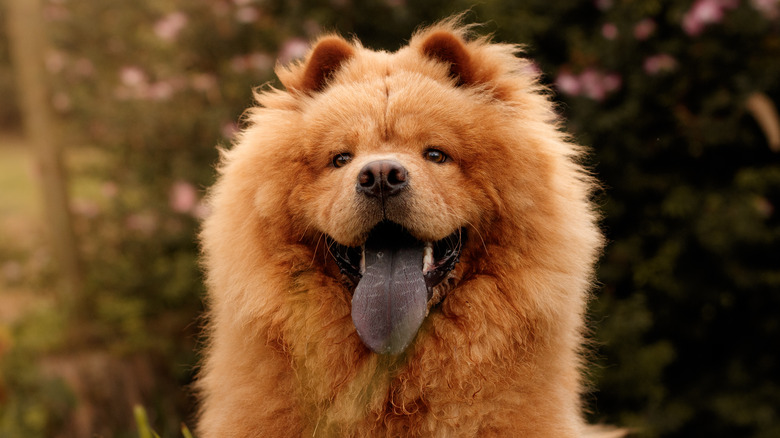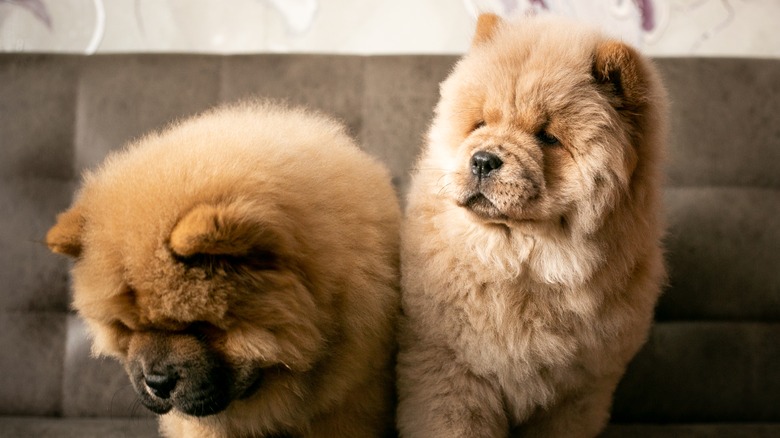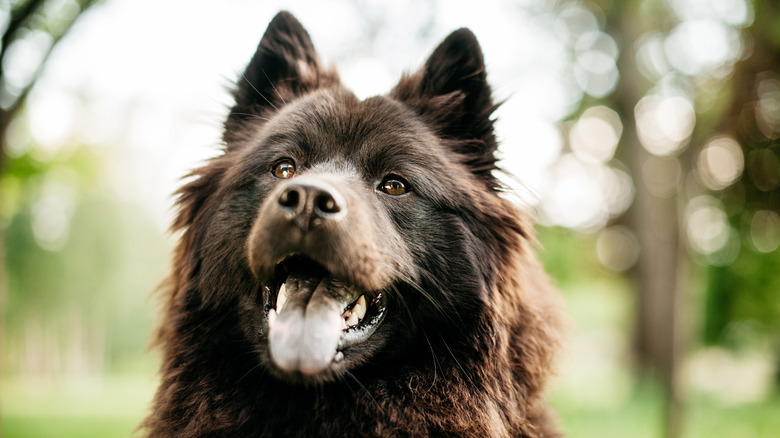The Mystery Behind Chow Chows' Blue Tongue Explained
Fluffy dogs who look like they might be bears in disguise, chow chows have several distinct traits. They are perhaps best known for their signature blue, purple, or blackish tongues, which sometimes looks like they just finished eating an entire box of grape ice pops. But why do chow chows have this coloration?
There is no known reason for this phenomenon, though several tall tales provide creative, albeit fictional, explanations. One legend states that as the Earth was being formed, chow chows licked up shards of blue sky created by stars. Another story says their blue tongue keeps them safe from evil spirits. A third theory claims that the blue color helps safeguard the tongue from UV rays, but it's just that — a theory.
The blue or blackish tongue is simply caused by excess pigmentation. However, chow chows are one of the oldest dog breeds in the world, and it's hard to pinpoint exactly why this trait developed. Though, it's safe to say that the blue tongue your chow chow licks your face with was a genetic inheritance.
Do all chow chows have blue tongues?
Every chow chow develops this blue-black tongue, but they're actually born with pink tongues, like most other dogs. Their tongues usually begin to change color in the first few months of their life as their eyes open, and the transformation is most often complete by the time they are six months of age. Chow chow tongues that have turned blue can also revert and develop pink spots as they get older, which is usually a normal loss of pigmentation due to aging.
Chow chows' blue tongues became a standard of the breed that is still enforced when it comes to show dogs. In fact, if a chow chow has any red or pink areas on the "top surface or edges" of their tongue, it is a "disqualifying fault," according to the American Kennel Club. Indeed, some adult chow chows have spotted tongues that don't turn blue fully. All that means is that they don't meet the breed standards to compete in shows. The patchy coloring of their tongues has no bearing on their health.
Are all dogs with blue tongues part chow chow?
Chow chows are not the only dogs or animals that sometimes have blue or black tongues — they're in company with giraffes, polar bears, blue tongue lizards, and more. Shar-peis, like chow chows, have a breed standard that includes blue-black tongues. Thai ridgebacks, Newfoundlands, and Labrador retrievers are among the breeds that can sometimes have genetic dark spots on their tongues, but it doesn't mean they're not purebred. So if your yellow lab has a spot on their tongue, that's not necessarily an indication that they're part chow chow.
The Eurasier, on the other hand, is a newer breed developed in Germany the 1960s that can also have blue or spotted tongues, but that's probably because the breed is a cross between the wolfspitz, Samoyed, and — you guessed it — chow chow. Pups of most breeds may develop harmless blue spots on their tongues at any point in their life, but if large splotches appear suddenly or their whole tongue turns blue for the first time ever, this could indicate medical issues that should be taken care of right away.


